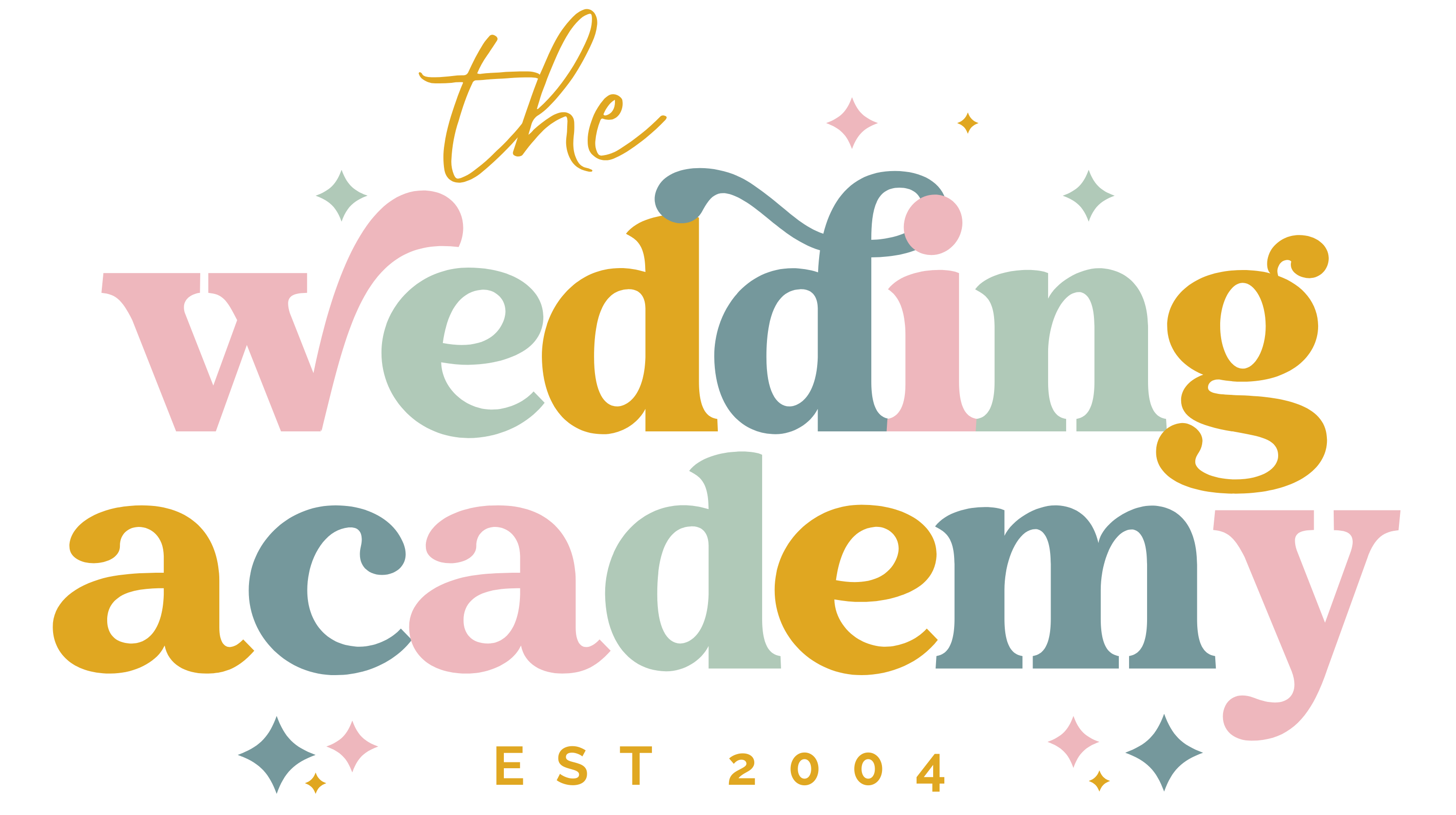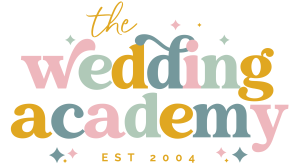Special offer ends:
- 00Minutes
- 00Seconds


INTRODUCING
Certificate in
Wedding Styling
Ready to weave your passion for style and elegance into a flourishing career? 💍✨ Your journey begins here! Our Certificate in Wedding Styling is more than just a course; it’s your passport to the captivating realm of crafting unforgettable, picturesque weddings.
Become a Certified Wedding Stylist (CWS)
The Certificate in Wedding Styling Course is an immersive online experience that not only guides you in creating visually stunning and stylistically impeccable weddings but also equips you with the essential skills needed to forge a prosperous career as a renowned wedding stylist.
Why choose this course:
This course distinguishes itself with a richly detailed curriculum, meticulously merging theoretical principles with hands-on practical experience, ensuring that you’re not just learning, but deeply engaging with and mastering the art of wedding styling.
Armed with access to a global community of industry leaders, state-of-the-art resources, and continuous support, students are not merely prepared but are propelled to excel in the vibrant and artistic world of wedding styling.
Whether you envision creating spellbinding wedding atmospheres or aim to carve out a niche for your unique styling brand, this course is your roadmap to triumph. It provides you with the skills, assurance, and competitive edge needed to shine in the bustling wedding styling arena.


Why Wedding Academy?
With up-to-date and industry-relevant content, students are guaranteed an education that is both current and comprehensive, ensuring they stay ahead in the ever-evolving wedding industry.
The course’s flexible learning structure allows students to balance their studies with personal and professional commitments, offering a learning journey that adapts to their lifestyle.
Beyond the course completion, ongoing training and support are available, providing a continuous learning environment that nurtures growth and development.
Financial accessibility is also a priority, with various payment plans ensuring that the course is within reach, allowing students to invest in their future without financial strain.
This holistic approach ensures that students are not just educated but are truly prepared to excel and innovate in the dynamic field of wedding planning.
Dynamic Learning, Real Application
Engage in a dynamic learning experience where theory seamlessly blends with real-world application. Dive into interactive sessions, explore case studies, and undertake your optional Certification project that refine your skills and boost your confidence.
Your Wedding Styling Toolkit
Gain exclusive access to essential templates, checklists, and resources – your secret weapons for becoming the go-to expert in wedding styling. From initial client consultations to handling unexpected twists, this toolkit has you covered every step of the way.
Community of Wedding Enthusiasts
Join a global network of passionate wedding enthusiasts, industry experts, and mentors. Collaborate, share ideas, and become part of a community that nurtures your growth, extending support beyond the course.
Ongoing Training and Support
Regular trainings and updates from the Head of Wedding Planning to implement the latest trends and techniques and the option of personalised paid coaching.
Imagine...
Embark on a transformative journey with the Certificate in Wedding Styling from the Wedding Academy, where your affinity for elegance and design evolves into a distinguished career. Each day presents a new chapter in a saga of sophistication and innovation.
This course is not merely an educational pursuit; it is a comprehensive induction into the elite world of wedding styling. You’ll acquire a robust amalgamation of industry-specific knowledge, practical expertise, and a prestigious certification that distinctively positions you in a competitive market.
Envision your inherent design talent becoming the cornerstone of your professional identity, attracting discerning clients and unlocking opportunities for unique and ambitious projects. The proficiency you develop with us ensures your capability to not only anticipate but also set trends, crafting each wedding into a masterpiece of timeless beauty.
Beyond the acquisition of skills, this course is a conduit to a professional network of unparalleled value. Forge lasting relationships with mentors, industry peers, and fellow enthusiasts, all within a supportive and collaborative community.
Graduation marks not just the completion of a course, but the commencement of a career defined by excellence, innovation, and leadership in an industry that epitomizes the celebration of love and life’s most pivotal moments.
Choose the Certificate in Wedding Styling at the Wedding Academy as your pathway to a future where your passion for style and creativity sets the standard in the world of wedding styling.
Introducing Reem Zarifa
With a wealth of experience in event management and styling, our newly appointed Head of Wedding Styling, Reem brings a unique blend of creativity and meticulous attention to detail to every project she undertakes – including the updates of Certificate in Wedding Styling.
In her recent role as Creative Lead Event Manager & Stylist at MK Agency, Reem honed her skills in orchestrating seamless events of various scales and themes. From birthdays to proms, engagements to weddings, Reem’s styling expertise extends across a spectrum of celebratory occasions.
As part of our commitment to providing a comprehensive learning experience, students will have a complimentary introductory session with Reem. Additionally, they’ll have the option to engage in ongoing personalized coaching sessions with her, receiving guidance tailored to their individual goals and aspirations.


Access your course anywhere.
Gain flexibility in accessing your Wedding Academy course by seamlessly navigating it on a range of devices such as desktops, tablets, and mobile phones.
Excitingly, as of 2024, we have introduced our dedicated app available for both Apple and Android platforms. This innovative app not only enhances the learning experience but also allows you to conveniently stream content to your television, providing an even more immersive educational journey.
Where you might find yourself now:
- Lacking formal credentials or a portfolio that reflects your styling expertise to potential clients or employers.
- Possessing a passion for wedding aesthetics but with limited or informal experience in the intricacies of event styling.
- Unsure about the pathways to initiate or elevate a career in wedding styling.
- Facing restricted access to industry experts, cutting-edge styling resources, and networking avenues.
- Limited understanding of the business aspects of running or establishing a wedding styling venture.
- Navigating challenges in event styling logistics, including on-the-spot creative problem-solving.
- Difficulty in materializing clients' visions into detailed, harmonious wedding styling concepts.
- Seeking better strategies for managing client communications, expectations, and building lasting relationships.
- Needing more experience in negotiating with and orchestrating a diverse array of vendors and suppliers seamlessly.
After this course:
- You will hold a prestigious certification, elevating your credibility among clients and within the industry.
- You will master professional-level wedding styling skills, transforming concepts into beautifully executed realities.
- You will have a clear roadmap for launching or propelling your career in wedding styling forward.
- You will gain invaluable connections through access to a global network of industry professionals, peers, and alumni.
- You will comprehend the nuances of establishing, managing, and expanding a wedding styling business.
- You will become adept at navigating unexpected scenarios, making strategic decisions swiftly and effectively.
- You will excel in devising and actualizing detailed, bespoke wedding aesthetics and themes.
- You will be proficient in fostering client relationships, managing expectations, and delivering unparalleled service.
- You will be skilled in coordinating with vendors, ensuring a harmonious collaboration for flawless event execution and success.
This course is your gateway to a realm where every celebration is transformed into a visual spectacle. Seize this opportunity to embark on a journey filled with creativity, elegance, and limitless potential!
What You'll Learn
The course covers everything from selecting the perfect decor and floral arrangements to understanding lighting and fabric dynamics, ensuring every detail contributes to a harmonious and memorable event. Beyond the visual elements, you’ll also gain insights into effective client communication, vendor coordination, and the business acumen needed to thrive in the competitive wedding styling industry.


MODULE ONE - THE ART OF DESIGN
What is Design
This foundational knowledge is crucial as you learn how lines, shapes, colors, textures, and forms can interplay to create visually stunning designs. You'll delve into the principles of balance, harmony, contrast, and proportion, and discover how to apply these concepts to elevate your wedding styling projects into artful expressions.
Becoming A Stylist
This lesson is designed to give you a clear understanding of the myriad career paths in the industry and the requisite skills and qualities needed to excel in each. Beyond the creative aspects, you'll uncover the essential tools and resources at your disposal, from design software and mood boards to vendor databases, ensuring you're well-equipped for success.
Finding Your Inspiration
Explore various sources of inspiration—from the tranquility of nature to the vibrant pulse of fashion, art, and culture—and learn how to channel these influences into cohesive, breathtaking wedding designs. This lesson also introduces you to the art of branding, guiding you in creating a brand identity that resonates with your style and values as a wedding stylist.
MODULE two - WORKING WITH STYLING COMPONENTS
The Stylist's Toolbox
This lesson is your comprehensive guide to understanding and assembling the essential tools and resources critical for success in the field. Discover the intricate details of various styling components such as fabrics, florals, lighting, furniture, and decor. Learn the art of selecting and utilizing these elements to forge unique and memorable wedding experiences. Moreover, gain insights into maintaining a resourceful inventory and strategies for sourcing the finest styling components, ensuring your designs are not just beautiful but also resonate with quality and sophistication.
Working With Styling Components
This section is dedicated to mastering the synergy between different styling elements to craft cohesive and visually captivating wedding scenes. Explore innovative ways to blend and arrange styling components, creating an atmosphere that exudes elegance and harmony. Dive into the nuances of color, texture, and form, and understand how these elements interweave to sculpt an ambiance that captivates and enchants. Additionally, learn the significance of constructing a mood board, a powerful tool that aids in visualizing, refining, and communicating your visionary designs to clients effectively.





MODULE THREE - USING COLOR IN YOUR STYLING
Using Color In Wedding Styling
Understand how to skillfully employ color to craft mood, ambiance, and convey emotions, transforming spaces into vivid narratives of the couple's love story. Explore various color schemes and palettes, learning to create designs that are not only visually stunning but also cohesively blend with every aspect of the wedding, from florals and linens to lighting and decor.
The Colour Wheel
Gain a comprehensive understanding of color relationships—complementary, analogous, and triadic—and how these can be leveraged to curate a harmonious and aesthetically pleasing setting. Discover the intricacies of color properties such as hue, value, and saturation, and learn to employ these to add depth, contrast, and dimension to your wedding styling projects.
The Psychology of Color
This lesson explores how color choices can influence the mood and perception of wedding guests. Learn the symbolic meanings and cultural associations of different colors, understanding how each hue can be used to weave a narrative that resonates with the couple's personalities and values. Develop the skill to craft a cohesive, emotionally engaging design that not only captivates the eyes but also touches the hearts of all in attendance.
MODULE FOUR - NON FLORAL DECOR
Candles & Lighting
Learn how to artfully employ different lighting techniques, including uplighting, accent lighting, and the romantic glow of candlelight. This lesson guides you in selecting and arranging lighting elements to create environments that are not only visually stunning but also emotionally engaging.
Stationery Items
Understand the pivotal role of invitations, programs, menus, and place cards in establishing a cohesive theme. Gain insights into selecting and designing stationery that beautifully echoes the couple's personality and the wedding's overall aesthetic.
Fabric & Furnishings
Explore the world of linens, drapes, furniture, and props, understanding how textures, patterns, and colors can be orchestrated to create a seamless and enchanting visual narrative. This lesson empowers you to craft spaces that are not just places, but experiences.
Tabletop Design
This lesson is about elevating the ordinary to the extraordinary, ensuring that every table is a testament to your attention to detail and styling prowess.




MODULE FIVE - UNDERSTANDING LIGHTING
How to Use Lighting in Styling
This lesson guides you through the strategic use of lighting to reflect the couple's personality and values, creating environments that resonate emotionally and visually. Dive into various lighting techniques such as color washes, uplighting, and gobos, and master how to implement them to craft designs that are both visually compelling and emotionally stirring.
Lighting 101
"Lighting 101" provides a solid foundation in the principles of lighting, offering a deep understanding of different light sources, including incandescent, fluorescent, and LED lights. Learn about the significance of color temperature in setting the tone and ambiance of a wedding, and how it can transform the look and feel of a space. Additionally, gain knowledge about lighting fixtures and the art of selecting the right fixtures to complement and enhance your wedding designs.
MODULE SIX - WORKING WITH FLOWERS
How to Use Flowers and Best Practices
Learn the art of selecting flowers that not only complement the wedding's color scheme and style but also enhance the overall design narrative. This lesson also covers the essential best practices for working with flowers, offering valuable tips on handling, care, arrangement, and the effective use of floral foam, ensuring that your floral creations are both stunning and long-lasting.
Floral Style and Aesthetics
"Floral Style and Aesthetics" invites you to dive deeper into the aesthetic world of floral design, exploring various floral styles such as romantic, modern, and bohemian. Understand how to harmonize color schemes, textures, and arrangements to craft floral designs that are not just visually appealing but also cohesive and reflective of the wedding theme. Furthermore, this lesson explores the symbolic and emotional significance of flowers in weddings, empowering you to use floral elements to weave stories, convey meaning, and evoke emotions, making each wedding uniquely memorable.




MODULE SEVEN - CREATING A CENTREPIECE
Opulent Luxury
Learn the art of constructing cascading arrangements and intricate floral compositions that exude luxury and extravagance. You'll explore how to effectively employ color, texture, and scale to craft centerpieces that are not just decorations but statement pieces that capture the essence of opulence.
Modern Relaxed
In this section, you'll master the use of natural and organic materials such as wood, stone, and foliage to create centerpieces that evoke a sense of calm and simplicity. Discover various design techniques, including asymmetrical arrangements and loose, organic compositions. Learn to manipulate color, texture, and form to design centerpieces that are modern, unassuming, and yet profoundly captivating.
Minimalist Chic
This lesson guides you in selecting simple, yet elegant materials like glass, metal, and monochromatic flowers. Explore different design techniques such as single-stem arrangements and modest, refined compositions. This section emphasizes the importance of negative space, color, and form in crafting centerpieces that are minimalistic, chic, and embody an understated elegance.
MODULE EIGHT - WORKING WITH VENUES
Floor & Spatial Planning
Learn to critically analyze a venue's layout, flow, and lighting, and understand how these factors influence your styling approach. This section will guide you through the principles of spatial planning, teaching you how to establish focal points, balance spaces, and facilitate movement to create a functional and aesthetically pleasing wedding environment.
Wedding Venues
In this lesson you'll gain a comprehensive overview of the diverse range of wedding venues, each presenting its unique set of challenges and opportunities. Explore and adapt different design styles and themes that best complement each venue type, from the rustic charm of a barn wedding to the natural elegance of a garden-inspired outdoor wedding. Additionally, this lesson covers the practical aspects of venue cooperation, including managing vendor relationships, coordinating event timelines, and navigating permits and regulations.
Working with Marquees
Dive into the specifics of various marquee types, including clear span, tipis, and yurts, and understand the unique styling opportunities and logistical considerations they present. Learn to conduct thorough site inspections, choose appropriate flooring solutions, and develop effective weather contingency plans to ensure a seamless and memorable outdoor wedding experience.





MODULE NINE - THE PRODUCTION PROCESS
How to Work with Vendors
"How to Work with Vendors" is your foundational lesson in establishing and nurturing productive relationships with the myriad of professionals that contribute to a wedding. Learn the importance of choosing the right vendors, from florists to rental companies and lighting specialists, who align with your design vision and quality expectations. This section offers insights into the practicalities of vendor collaboration, including understanding contracts, managing timelines, and maintaining budgets. Gain the communication skills necessary to ensure clarity and coherence in your interactions, ensuring every vendor is a reliable partner in the realization of your design.
Producing Your Design
This lesson delves into the heart of the production process, equipping you with the organizational and managerial expertise to bring your wedding designs to fruition. Discover the critical role of organization and time management in the seamless execution of a wedding, and explore various tools and techniques to optimize the production process. Learn about the logistical challenges of producing a wedding design, from installation to teardown, and gain the knowledge to efficiently manage production teams, ensuring that every aspect of your design is impeccably executed.
MODULE 10 - Proposal, Contracts & Pricing
Creating Proposals
Discover how to utilize various proposal tools, including mood boards and design sketches, to create a visual narrative that captivates your clients. Understand the intricacies of proposal logistics, such as setting timelines, outlining budgets, and drafting contract terms, and master the art of communication to ensure your clients are engaged and informed throughout the proposal process.
Budgets & Pricing
Learn to navigate the complexities of setting budgets and pricing models, whether you're working with hourly rates or offering package pricing. This lesson empowers you to price your services in a way that reflects your expertise and the value you provide, while also covering the practicalities of budget management, expense tracking, and cash flow. Develop clear and effective strategies for discussing budget constraints and expectations with clients, ensuring transparency and trust in your professional relationships.
Pricing Your Styling Stock
Explore various pricing strategies, including markup and cost-plus pricing, to ensure your stock is priced appropriately for profitability and market competitiveness. Gain insights into efficient inventory management, from monitoring stock levels to replenishing items, and learn to communicate effectively with clients regarding stock availability and pricing, ensuring clarity and professionalism in every transaction.






MODULE ELEVEN - Working with Clients
The Design Consultation
"How to Work with Vendors" is your foundational lesson in establishing and nurturing productive relationships with the myriad of professionals that contribute to a wedding. Learn the importance of choosing the right vendors, from florists to rental companies and lighting specialists, who align with your design vision and quality expectations. This section offers insights into the practicalities of vendor collaboration, including understanding contracts, managing timelines, and maintaining budgets. Gain the communication skills necessary to ensure clarity and coherence in your interactions, ensuring every vendor is a reliable partner in the realization of your design.
The Design Mockup
Explore a variety of techniques, from 3D modeling to physical prototypes, to offer clients a tangible glimpse of your design vision. Learn the nuances of receiving and incorporating client feedback, ensuring your designs are finely tuned to meet their needs and exceed their expectations.
Using ProCreate To Illustrate Your Designs
Our friends at CWD Design have generously offered a "ProCreate Ceremony Mini-Course" for our students. This special gift includes five comprehensive step-by-step tutorials, along with all the Procreate brushes and color palettes necessary to create your first ceremony illustration. This bonus lesson is a unique opportunity to expand your design capabilities and bring your ceremony concepts to vibrant life, adding an extra layer of depth and professionalism to your styling portfolio.
The Certificate in Wedding Planning is your golden ticket to a world where every celebration becomes a masterpiece. Don’t miss this chance to embark on a journey of love, joy, and endless possibilities!
Limited Time Offer:




Bonus Course
We'll give you another Certificate Course! Worth $297 USD!




Business Bundle
A bundle of our top selling templates to kick-start your wedding planning processes.
Worth $149 USD!




Wedding Empires Pro
Enjoy a complimentary 3 month trial of our hit wedding group coaching program
Worth $57 USD!




Certificate in Wedding Styling
Take advantage of our ONE TIME OFFER today, giving you over $1600 USD of value, or simply enroll in this course alone for the regular price. Both options come with Payment In Full or Payment Plan options.
ONE TIME OFFER
Don’t pay $800 USD!
$197 USD
- TWO Certificate Courses ($594)
- Business Bundle ($149)
- Wedding Empires Pro Trial ($57)
- Pay in Full or Payment Plan
- Private Student Community
- Ongoing Training & Support
- Lifetime Access
- 00Minutes
- 00Seconds
REGULAR PRICE
Pay in Full or Payment Plan:
$297 USD
- Pay in Full or Payment Plan
- Private Student Community
- Ongoing Training & Support
- Lifetime Access
You’ll see the Course in your local currency on the next page.
Get Certified
The Wedding Academy is an industry certification body and recognised globally. Our courses are endorsed by an international Advisory Board of wedding professionals, and in some case stars, (David Tutera), who are all leaders in their respective fields.




Student Community
The Wedding Academy Student Community, boasting over 1500 active students and graduates globally, offers a rich, collaborative platform that provides immense value, particularly to new graduates embarking on their professional journey.
Being part of this vibrant community allows newcomers to tap into a wealth of knowledge and experience, facilitating learning beyond the confines of your course.
It’s a space where budding professionals can seek advice, share challenges, and celebrate successes with peers who understand the nuances of the industry.
Networking opportunities abound!
Meet Your Instructor
Kylie Lang (nee Carlson)
This course was developed originally by Kylie Lang, the Founder of The Wedding Academy. Although we continue to update the course content regularly, the foundations of wedding planning remain the same, so you’ll find a great deal of the original course content throughout the journey.
Kylie Carlson’s journey in the industry is both rich and diverse, encompassing roles as a planner, stylist, and an educator. Her prowess as a designer is matched by her acclaim as an international entrepreneur, particularly noted for her expertise in marketing and innovative quiz designs.
Students will find Kylie to be not only knowledgeable but also approachable and engaging as an instructor, making the learning experience both enjoyable and enriching.




Have a Question?
The Academy is a private training organisation and the qualifications offered are both nationally and internationally recognised within the Wedding industry. There are no formal qualifications required to be a Wedding Planner, but studying with an industry recognised company like the Wedding Academy will not only equip you with the skills and knowledge you need to succeed, but also give your future clients confidence that they are hiring a professional.
Our certificates are recognised and accepted as a proof of your knowledge and skills. They are also accepted as proof of your commitment to learning and professional development. The certificate will contain information about the course you have completed, such as the topics covered and the duration of the course.
At The Wedding Academy we are dedicated to providing you with the best courses and certificates that are recognised and accepted by the wedding industry worldwide. With our courses, you can be sure that you will gain the knowledge and skills needed to succeed in your chosen field.
Wedding Academy Global provides comprehensive support to Certificate Course Students.
Here are some of the ways that the academy supports its students:
- Course Materials: All students have access to the course materials, which are designed to be clear and easy to follow. The materials include video lessons, downloadable resources, case studies, and quizzes to test your understanding.
- Mentor Support: Students have access to dedicated Mentors who provide guidance and support throughout the course. Mentors are available via email, phone, and online discussion forums to answer any questions and provide feedback on assignments.
- Student Community: Students can connect with other students in the course through online discussion forums, allowing for networking and collaboration with peers in the industry.
- Live Trainings: Wedding Academy Global provides regular live trainings and events that cover a range of topics related to the wedding industry. These events are an opportunity for students to connect with instructors and guest speakers and ask questions in real-time.
- Job Opportunities: Wedding Academy Global provides job opportunities through its industry connections and network of graduates. This allows students to gain experience and build their careers in the wedding industry.
Overall, The Wedding Academy provides a supportive and collaborative learning environment, giving students the skills, knowledge, and confidence they need to succeed in the wedding industry.
The course is self-paced, so you can complete it at your own pace. However, the estimated time to complete the course is 12 weeks.
We update the course regularly to ensure that the content remains current and relevant. Core updates happen at least once a year.
All Wedding Academy courses are online and available to students from anywhere in the world. The course materials are entirely online, and students can access the course materials and resources at any time, from any device with an internet connection.
The online course delivery format allows students to study at their own pace and complete the course from the comfort of their own home or office. Students can also connect with instructors and fellow students through online discussion forums, email, and live webinars, giving them the opportunity to network and collaborate with others in the wedding industry.
Yes, upon successfully completing any of the Certification Courses offered by Wedding Academy Global, students will receive a certificate of completion.
The certificate is a recognition of the student’s achievement in completing the course, and it verifies that the student has gained the skills and knowledge required to work as a professional wedding planner, stylist, or business owner.
The certificate is issued by The Wedding Academy and is internationally recognized, making it a valuable addition to your resume and professional portfolio.
In addition, The Wedding Academy provides ongoing support to its graduates, including access to its job board, industry connections, and networking opportunities. This support can help graduates to establish their careers in the wedding industry and continue to grow and develop their skills and knowledge.
I firmly believe that this course has been the best investment for my future!
The Wedding Academy provides up-to-date and in-depth knowledge, tools of the trade, work experience, support in the creation of your business, a lot of opportunities to grow and test yourself and many possibilities for networking with experts and creatives.
Monica Naclerio
amalfisoiree.com






Certificate in Wedding Styling
Take advantage of our ONE TIME OFFER today, giving you over $1600 USD of value, or simply enroll in this course alone for the regular price. Both options come with Payment In Full or Payment Plan options.
LIMITED TIME OFFER
Don’t Pay $800 USD!
$197 USD
- TWO Certificate Courses ($594)
- Business Bundle ($149)
- Wedding Empires Pro Trial ($57)
- Pay in Full and Save!
- Private Student Community
- Ongoing Training & Support
- Lifetime Access
- 00Minutes
- 00Seconds
START TODAY
Pay in Full or Payment Plan:
$297 USD
- Pay in Full or Payment Plan
- Private Student Community
- Ongoing Training & Support
- Lifetime Access
You’ll see the Course in your local currency on the next page.
PHOTOS: Adriana and James | Floral Sassafras Wedding, former WA Student | Photography Bianca Virtue | Venue Stones of the Yarra Valley, VIC Australia | Gown Kyha (bride is the lead designer)






